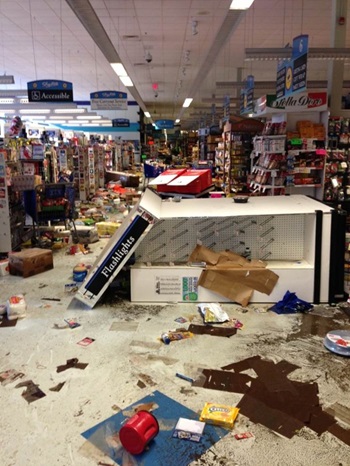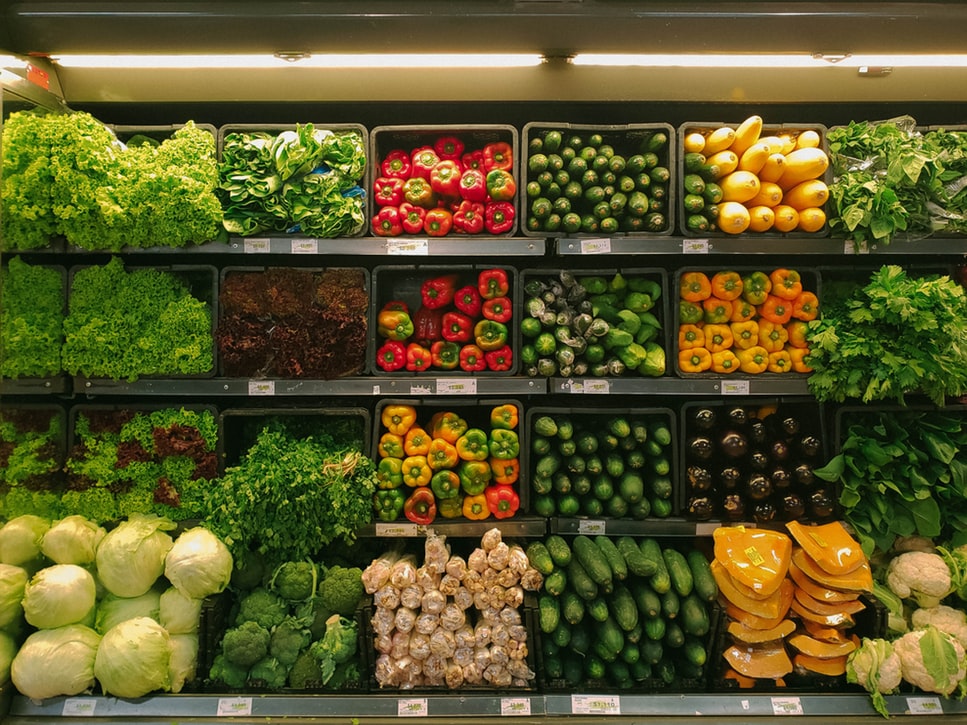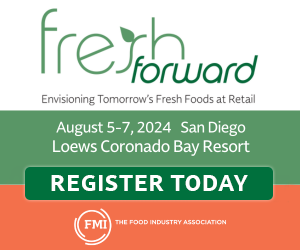By: Elizabeth Tansing, Director, State Government Relations

With historic flooding affecting parts of southern Louisiana, West Virginia and other ongoing disaster-related events in the U.S., FMI wants to ensure your companies are aware of resources available during times of great need.
As part of the National Response Framework, USDA’s Food and Nutrition Services (FNS) provides nutrition assistance to those most affected by a disaster or emergency. When state agencies notify FNS of the types and quantities of food that relief organizations need for emergency feeding operations, FNS will supply food to disaster relief organizations such as the Red Cross and the Salvation Army for mass feeding or household distribution.
FNS also authorizes states to provide Disaster SNAP (D-SNAP) benefits in disaster areas. D-SNAP is an entirely different program from SNAP (Supplemental Nutrition Assistance Program). SNAP offers nutrition assistance to millions of eligible, low-income individuals and families and is the largest feeding program in the domestic hunger safety net. D-SNAP is established after a federally-declared disaster and when a state receives approval from USDA FNS. Any individual or family in a disaster-related area that undergoes damage to their home or self-employment property, has disaster-related expenses, food loss, income disruption or inaccessibility to liquid resources may be approved for D-SNAP. In addition, states have the option of including individuals working in the disaster area at the time of the disaster. Disqualification status from SNAP does not disqualify an applicant from D-SNAP.
When possible, it is always constructive to consider disaster responses beforehand. If you are located in an area where natural disasters can and do occur, pre-registering for D-SNAP should be considered. It should be done while you still have access to electricity and personal information. While this does not guarantee benefits, it will streamline the process.
In Louisiana, the Department of Children and Family Services is asking individuals and families to pre-register for D-SNAP. Louisiana residents should click here for more information. U.S. households who would like to apply for SNAP, D-SNAP or locate their USDA field office will find applications and other relevant information here. Any state association or retailer facing challenges in putting together applications in a disaster area due to loss of power, lack of access to documentation or templates, lack of access to email, etc. may contact FMI for assistance.
According to the West Virginia Department of Health and Human Resources, D-SNAP benefits provided $4,661,482 to thousands of people in the 12 declared disaster counties from July 25-31, 2016. D-SNAP benefits went to 4,766 individuals not currently on SNAP, and 43,744 individuals currently receiving SNAP.
Meanwhile, the West Virginia Oil Marketers and Grocers Association (OMGA) has been contacted by Governor Earl Ray Tomblin’s office regarding retailers who have either donated money, supplies or volunteer hours to assist in the flood relief effort. The governor’s office is working to create a database to highlight the many contributions made by generous companies and individuals. If you are a retailer, you may respond to Traci Nelson, and OMGA will pass this information along.
To view FNS’s recent and current responses, including D-SNAP distribution, click here. Click here to view USDA’s Disaster Resource Center. If you’d like to receive news updates and disaster-related information directly to your computer or wireless device, click here to sign up for FEMA's email subscription service.


 Industry Topics address your specific area of expertise with resources, reports, events and more.
Industry Topics address your specific area of expertise with resources, reports, events and more.
 Our Research covers consumer behavior and retail operation benchmarks so you can make informed business decisions.
Our Research covers consumer behavior and retail operation benchmarks so you can make informed business decisions.
 Events and Education including online and in-person help you advance your food retail career.
Events and Education including online and in-person help you advance your food retail career.
 Food Safety training, resources and guidance that help you create a company food safety culture.
Food Safety training, resources and guidance that help you create a company food safety culture.
 Government Affairs work — federal and state — on the latest food industry policy, regulatory and legislative issues.
Government Affairs work — federal and state — on the latest food industry policy, regulatory and legislative issues.
 Get Involved. From industry awards to newsletters and committees, these resources help you take advantage of your membership.
Get Involved. From industry awards to newsletters and committees, these resources help you take advantage of your membership.
 Best practices, guidance documents, infographics, signage and more for the food industry on the COVID-19 pandemic.
Best practices, guidance documents, infographics, signage and more for the food industry on the COVID-19 pandemic.
